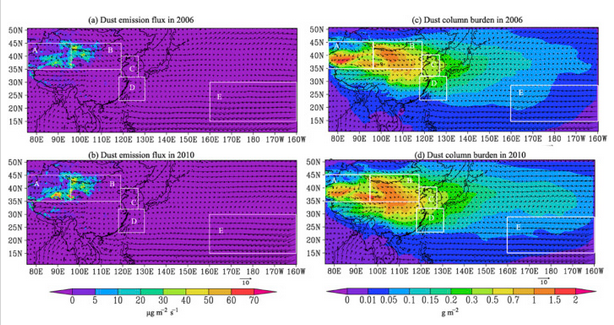Dust storms don't just affect air quality, they influence marine life too. These findings by researchers in China have been published in Atmospheric Environment.
In 2010, China was struck by a massive dust storm that blanketed the capital Beijing in a thick layer of yellow dust and spread as far as Japan. The dust storm was accompanied by a large algal bloom off the coast of Shandong, thought to have been triggered in part by the increase in iron blown in from the storm. However, few studies have examined the direct link between natural dust events and marine biological productivity.
Using simulations and data from the Cloud-Aerosol Lidar and Infrared Pathfinder Satellite Observation (CALIPSO) satellite, Dr. Tan Saichun and Professor Shi Guangyu from the Institute of Atmospheric Physics of the Chinese Academy of Sciences have quantitatively estimated the contribution of dust deposition to phytoplankton growth.
Their results showed that dust aerosols mainly floated up to 13 km above ground level over the source regions and above the seas. Furthermore, dust containing iron was the most important factor affecting phytoplankton growth and the deposition of iron via severe dust storms satisfied the increase in demand required for phytoplankton growth (115-291 percent). (Asian Scientist)

Simulated dust emission flux using Regional Air Quality Model System (RAMQS) model in (a) spring 2006 and (b) spring 2010. Simulated mean dust column burden in (c) spring 2006 and (d) spring 2010. (Image by Tan et al., Institute of Atmospheric Physics, Chinese Academy of Sciences)

